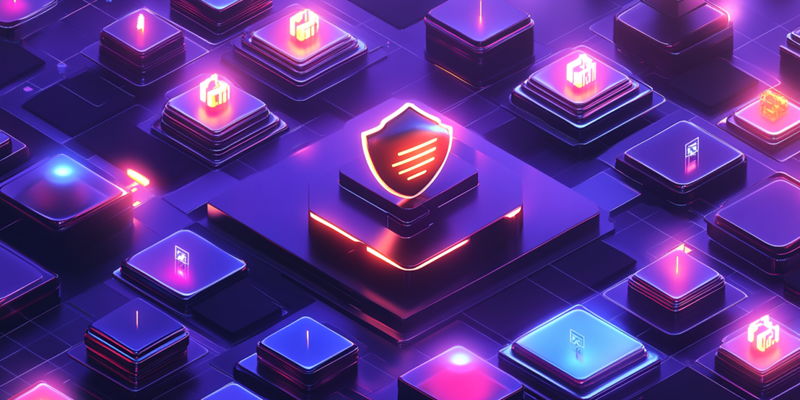In the rapidly evolving cybersecurity landscape, traditional methods of threat detection and response are becoming obsolete in the face of AI-driven threats. Cybersecurity professionals must now adopt innovative approaches that combine the strengths of both human intuition and AI technology.
The New Face of Cyber Threats
AI-Driven Cyber Attacks
AI is transforming industries, and cybercrime is no exception. Threat actors now harness AI to create highly personalized attacks and evade detection with unprecedented efficacy. This demands that cybersecurity strategies evolve concurrently to counter these sophisticated threats.
Traditional defenses, reliant on static methods of threat detection, are increasingly less effective. AI-driven attacks can identify and exploit vulnerabilities faster than humanly possible. Therefore, cybersecurity defenses must incorporate AI to predict and neutralize threats in real time.
The Dynamic Nature of Threats
The threats posed by AI are not static; they continuously evolve. This dynamic nature of cyber threats underscores the importance of adaptable threat detection systems. Cybersecurity professionals must stay vigilant, updating their techniques and tools to anticipate and counteract these moving targets.
The agility of cyber threats also means that an attacker’s methods can rapidly change. This dynamic evolution requires threat hunters to be equally agile, leveraging AI for rapid analysis while applying human intuition to predict the next move.
Leveraging AI as a Defensive Tool
AI in Threat Detection
AI excels at sifting through vast amounts of data to pinpoint patterns and anomalies that might otherwise go unnoticed. Machine learning algorithms can be trained to detect known threats and flag unusual activities, drastically reducing response times.
However, the effectiveness of AI is highly dependent on the quality of its training data. Without quality data, machine learning models can fail to accurately identify threats, making the role of human oversight indispensable.
The Limits of AI and the Need for Human Intuition
While AI can process data at scale and identify patterns, it lacks the creativity to think outside established parameters. Human intuition and creativity are crucial to recognize and interpret novel threats that AI might miss.
A hybrid approach, where AI handles the bulk data analysis and humans provide contextual insights, creates a more formidable defense. This synergy ensures that even the most subtle and innovative cyber threats are detected and countered.
Building Antifragility in Cyber Defense
Antifragile Systems
Inspired by Nassim Taleb’s concept of antifragility, adaptive cyber defense systems should become stronger through exposure to stress. In the cybersecurity context, this means systems that learn and improve from every attack they encounter.
An antifragile system leverages past attacks to bolster its defenses. By codifying attack elements and studying patterns, such systems can autonomously deploy successful mitigation strategies used in previous incidents. This continuous learning cycle is crucial for robust cybersecurity.
Human Contributions to Antifragility
Human threat hunters play a pivotal role in enhancing antifragile systems. By analyzing and interpreting anomalies, they contribute to the system’s growing knowledge base. These professionals weave together observed anomalies to form comprehensive attack narratives, teaching the AI to recognize and counter new threats.
This collaboration between humans and machines ensures that the AI continuously learns from real-world encounters, making the system increasingly resilient.
The Human-Machine Feedback Loop
Integrating Human Insights
A key component of an effective cyber defense strategy is the establishment of a human-machine feedback loop. Threat hunters must regularly integrate their findings into AI systems, refining the AI’s algorithms and improving its detection capabilities.
This iterative process allows threat-hunting teams to stay ahead of evolving threats. Human insights feed into the AI, which in turn adapts and grows more efficient at identifying and mitigating new threat vectors.
Constructing Attack Narratives
Human threat hunters excel at constructing narratives around cyber attacks. By interpreting data and identifying anomalous patterns, they can form detailed stories of potential attacks. These narratives educate the AI, enhancing its predictive capabilities and making it easier to spot similar threats in the future.
This continuous exchange of knowledge between human experts and AI systems ensures a robust, dynamic defense against ever-evolving cyber threats.
The Role of Human Threat Hunters
Enhancing AI Capabilities
Far from being replaced by AI, human threat hunters will find their roles becoming more critical. AI tools can automate routine tasks, but strategic analysis and proactive threat hunting require human expertise. These professionals guide AI systems, making complex decisions that machines are not equipped to handle.
Human threat hunters enhance AI capabilities by providing nuanced interpretations and recognizing patterns that elude automated systems. Their expertise ensures that AI tools are used to their full potential, creating a powerful alliance against cyber threats.
Strategic Focus and Proactive Hunting
In today’s fast-changing world of cybersecurity, traditional methods of identifying and dealing with threats are becoming ineffective against AI-driven attacks. The tools and strategies that once safeguarded our digital spaces are now insufficient. This shift underscores the need for cybersecurity experts to embrace innovative methods that merge human insight with advanced AI technology.
This article highlights the importance of a hybrid approach in cybersecurity. By combining the analytical strengths of machine learning with the nuanced understanding of human experts, organizations can better anticipate, recognize, and respond to increasingly complex cyber threats. Unlike purely automated systems, which may overlook subtle or context-specific indicators of a threat, a blended strategy leverages the best of both worlds.
The fusion of human expertise and AI capabilities not only enhances threat detection but also strengthens response mechanisms. Human analysts bring intuition, contextual knowledge, and ethical considerations to the table, while AI provides speed, scalability, and the ability to process vast amounts of data. Together, they form a robust defense against sophisticated cyber attacks.
In summary, as cyber threats continue to evolve, it is crucial for cybersecurity professionals to adopt a balanced approach. By integrating human and AI strengths, they can develop more effective strategies to protect against the ever-changing landscape of digital threats.

